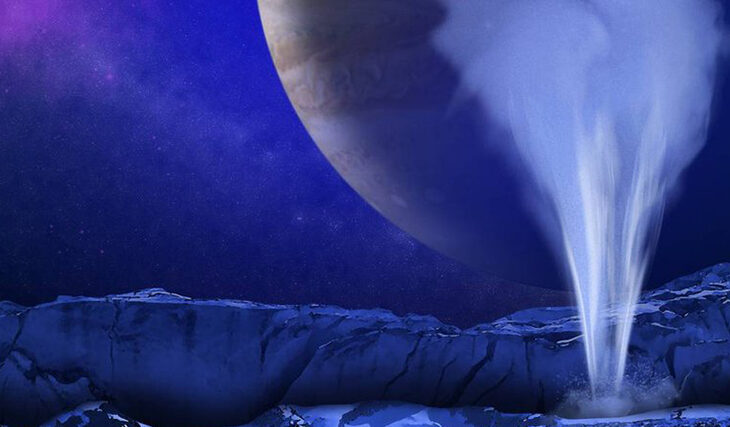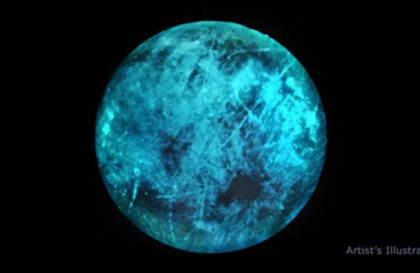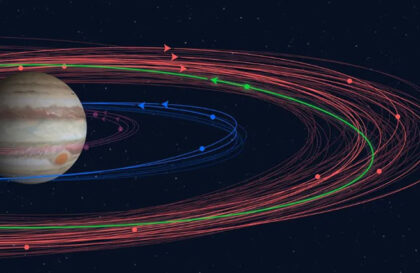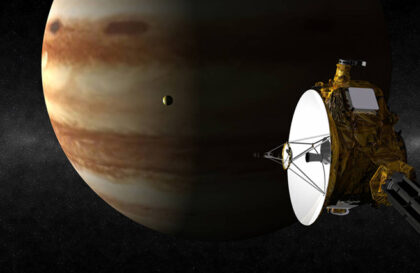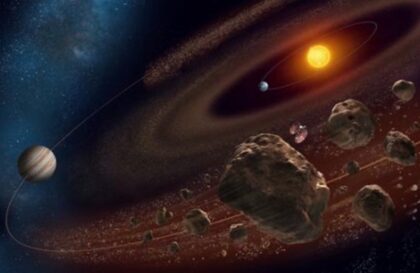The amount of water vapor found in Europa’s atmosphere is small – about an Olympic-sized swimming pool. However, the race between NASA and ESA to see who can reach Europe first is already in full swing.
Plumes of water vapor on the satellites of the gas giants
Scientists believe that the elements necessary for life, including carbon, hydrogen, and oxygen, are common throughout the solar system and beyond, creating the conditions for the possible existence of various life forms. However, liquid water, critical to life, is rare. For example, the Earth might be uninhabited without it, but Mars has a wetter past and may have been inhabited. It is now considered uninhabited due to the lack of surface water and high radiation levels.
Credit: NASA
The discovery of plumes of water vapor on Saturn’s moon Enceladus, especially at its south pole, is considered a major scientific achievement. Despite its small size, it is believed that there is a global ocean beneath Enceladus’s ice cover that feeds these plumes and could support biology that could be studied during the spacecraft’s flyby.
Vents in Europa’s icy crust could allow plumes of water vapor to escape from a sub-surface ocean. If observed up close, the chemical components of the plumes would be identified and could help explain the nature and history of the ocean below. Credit: NASA.
Years of studying Europe for watery plumes also paid off. Although earlier observations strongly suggested that there were sporadic plumes of water vapor in the atmosphere, it was in November 2019 that the discovery was confirmed. Scientists have yet to discover liquid water directly. They have found water in the form of steam.
The amount of water vapor detected in the European atmosphere was small – about an Olympic-sized swimming pool.
Missions to Europe
A mission is planned to be sent to Europa – NASA’s Europa Clipper in 2024. The JUpiter ICy lunar exploration mission (JUICE), led by the European Space Agency, launched on April 14, 2023.
The ESA Juice spacecraft will arrive at Jupiter in 2029. It will spend at least three years making detailed observations of the giant gaseous planet Jupiter and three of its largest moons, Ganymede, Callisto, and Europa. Evidence suggests that Ganymede, the largest moon in the solar system, also has a salty ocean beneath its ice core, but little is known about its possible size and location.
Credit: ESA.
The Europa Clipper and JUICE missions are different in many ways. Still, they share the same Jupiter system and Europa destinations and are in a race to be the first to experience Europa’s atmosphere up close.
When it arrives at Europa, the Clipper orbiter will conduct a detailed survey of the moon’a surface, deep interior, thin atmosphere, subsurface ocean, and potentially even smaller active vents. The Clipper will attempt to take images of any plumes and sample the molecules it finds in the atmosphere with its mass spectrometers. It will also seek a safe and promising fruitful site for a proposed (but unfunded) future Europa lander mission. Credit: NASA/JPL–CALTECH.
Banner image: This is an artist’s illustration of a plume of water vapor being ejected off the frigid, icy surface of the Jovian moon Europa. Credit: NASA/ESA/K. RETHERFORD/SWRI.
Image credit:
https://astrobiology.nasa.gov
